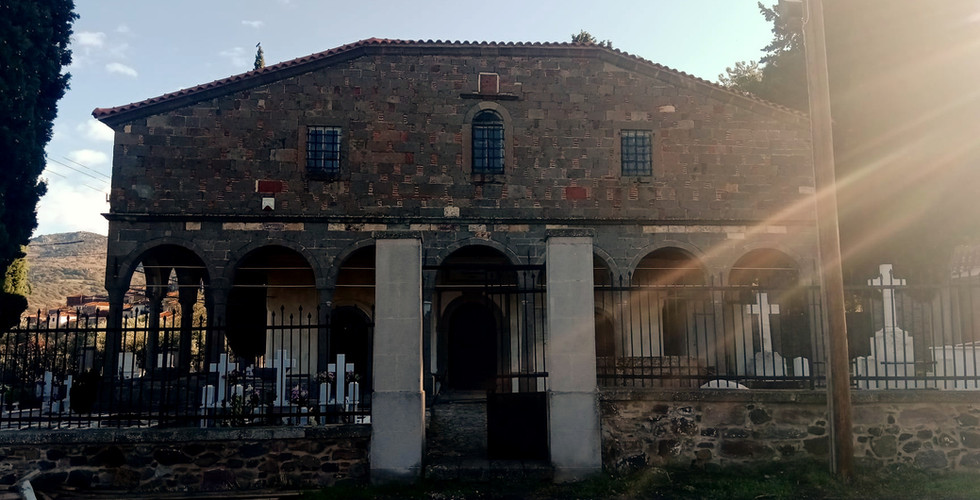How easy it is to be drawn towards the coastline when venturing the Island, especially to escape the scorching summer heat. But delve deeper inland and treasures will reveal themselves from within the mountainous forests.
And Vatoussa is one of the most precious of them all.

Situated along the Antissa-Kalloni route, Vatoussa has been a popular stop for the transient traveller wanting to stretch their legs and refill their coffee cup. It is also frequented in the late autumn months by locals from neighbouring villages who visit the olive press with their seasonal harvest. But once you ascend the narrow cobbled streets you realise it is worth much more than a fleeting glance. There are 500 traditional buildings, and to witness their classical yet unique architectural beauty is to understand how this village has gained its protective status and labelled one of five true traditional villages of Lesvos by the Ministry of Culture. This title doesn’t come without hard work. Alongside these homes are the very friendly and hospitable residents who stand just as tall and proud as their households, working together to preserve and support the neighbourhood.
Established in the 10th century, the village is now home to around 200 people, increasing to 700 in the summer months when more return for respite from the mainland. Once they arrive the village hosts many festivities to celebrate the gathering of the returning family and friends. But even in the winter months most shops and tavernas are still open, and the attractions are still accessible.
Vatoussa is home to two very impressive churches, the oldest being The Church of Taxiarches that dates back to 1832. A basilica styled without a dome, common for the North Aegean, but delightfully decorated inside with Pagen folk art. Situated within the village cemetery, and neighbours with the equally splendid primary school building, it is surrounded by unusual vaulted tombs that are still in use.
The other more recent central church of The Dormition of the Virgin Mary dates back to the 1850s and is of the same style but with an exterior built entirely of hand-hewn chipped stone, the courtyard home to a museum of Byzantine relics, and the interior iconostasis beautifully carved from wood and framed with illustrations of Aegean Christian art.
Another prominent structure is the Mansion of the Gogos, a nineteenth century Mytilenian style manor house, that has been transformed into a museum and library of rare collections by the residents who maintain it with the same care and respect they demonstrate on the rest of the village.

Unclear on the actual meaning of Vatoussa (or Vatousa), it has been translated as ‘area rich in berries’ and ‘area where bushes abound’, it has also been interpreted as ‘the accessible one’. This has never been more true with the new road opening next year, which will make light work of the journey from the nearest beach of Gavathas, the ever expanding port of Sigri, and the West Lesvos seat of Kalloni.
Many believe Vatoussa is formed from the original crater of the volcanic eruption that caused the complete landscape transformation many million of years ago, including the Petrified Forest, resulting in the surrounding creviced woodland that trails into old winding lava canyons to admire and explore. Whether true or not, something beautiful has certainly been created from the ashes.
When looking down from the central bell tower in the Platia, the panoramic spectacle is of a community proud of their home and heritage, a true masterpiece.

Special thanks to Mr Avel Spanellis, President of Vatoussa for 22 years, and Omiros Palogellis for giving your time with an informative tour of the village, and Iraklis Karagiannis for your patient translation.
Visit the Vatoussa Village website for more information, and subscribe to their newsletter to keep up to date with news and events.
Post by Nikki Franks Falloon





















Comments